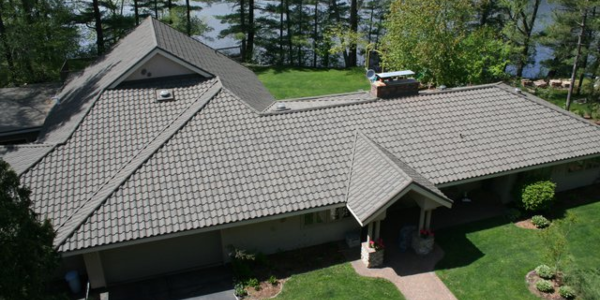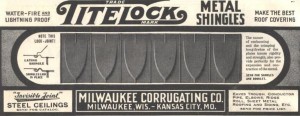What Are Rooftop Ice Dams and How Can You Prevent Them?

By Metal Roofing Alliance (MRA)
Here’s why it’s never too early to start preventative maintenance on your roof before next winter.
If this last winter showed us anything, it’s that homeowners in any part of the country can experience harsh winter storms. That’s why we at the Metal Roofing Alliance (MRA) like to encourage homeowners to keep a close eye on their roof not just after a storm hits, but before next winter as well. One costly problem homeowners see with their roof after a storm is “ice dams”, but what exactly are they and how can they be prevented?
Icy winter weather can cause a phenomenon known as “ice dams,” which can wreak havoc on roof durability and result in costly maintenance issues. While many homeowners blame faulty gutters for freezing over and causing trouble, ice dam problems are typically much more complex. Ice dams occur on roofs when temperatures fluctuate, falling below and rising above the 32 degrees freezing point. As snow starts to melt, it can re-freeze near roof soffits and overhang areas, which do not get as warm. That can cause a dam, where melting water backs up and seeps into the home, damaging walls, ceilings and leading to mold issues.
Experts say the best way to prevent ice dams is by maintaining steady rooftop temperatures. Ice dams can get worse as water freezes, re-freezes and continues to build up. Uneven snow melt on rooftops and large icicles that form at the eves and on gutters can be a sign of trouble.
“A roof bears the brunt of extreme winter storms, heavy snows and freezing temperatures,” said Renee Ramey, MRA executive director. “A well-designed system not only helps keep the interior warmer and more comfortable, it also prevents ice dams from forming in the first place and guards against costly damage.”
To help prevent rooftop ice dams, the MRA recommends paying attention to these important details, including:
Guard against temperature fluctuations
Material such as metal can help reduce the risk of ice dams, but without proper insulation, any roof can be subject to ice dam formation. Attic and ceiling insulation of R-38 or more is commonly recommended in colder regions. Check building codes in your area and make sure your insulation meets or exceeds standards. For extra protection, ice and water shields and waterproof underlayment also can help prevent water intrusion.
Choose the right roofing material
For asphalt shingle roofs, ice dams may lead to damaged or displaced shingles, leaving pathways for serious water problems and roof failure, resulting in thousands of dollars in repair costs. Thanks to smooth surfaces, special coatings and temperature control capabilities, metal roofs can help prevent ice dams from forming while also withstanding heavy ice and snow loads. With tight, interlocking installation systems, a well-constructed metal roof is naturally impervious to water and can last 50-plus years without ever needing to be replaced, even in extreme weather conditions. As a bonus, metal roofs also are proven to be more energy efficient, helping reduce wintertime utility bill costs while offering maximum protection for homes.
Maintain good ventilation
Good eve and ridge ventilation are just as important in cold weather as in warm. Soffit-to-ridge ventilation systems help maintain proper and consistent roof temperatures and are recommended, no matter what the roofing material type. But while ventilation is essential, it also must be managed correctly. That means making sure that warm interior air is not allowed to pass into attic spaces and cause roof temperatures to rise. While proper insulation helps, sealing all ceiling openings and leaks is key. Use caulk or foam insulation to help seal wiring, plumbing, light fixture, exhaust fan openings and more.
Ineffective, potentially damaging (and dangerous) methods for trying to get rid of ice dams include chipping away at iced up gutters, which does nothing to stop ice dams, or worse, getting on ladders or on top of roofs to try and clear frozen material. The MRA warns homeowners to never get on their roofs in inclement weather and without proper safety precautions.
Have a question? AskARoofer.
Find your local roofing contractor in the RoofersCoffeeShop® Contractor Directory.













Comments
Leave a Reply
Have an account? Login to leave a comment!
Sign In